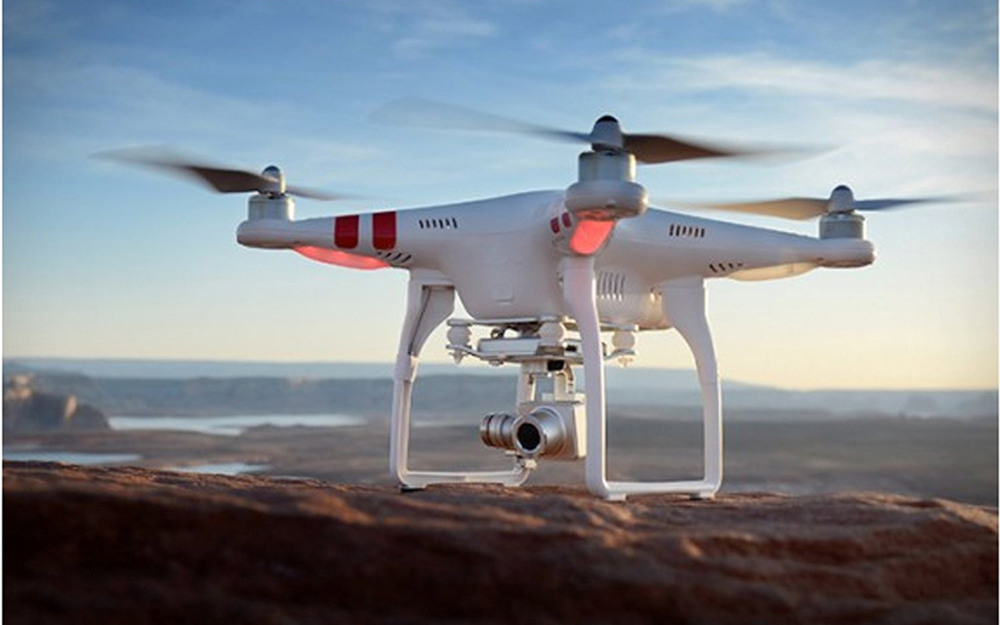


[File photo]
Chinese experts and media outlets have called for the implementation of clear regulations on China's drone industry, as recent incidents stemming from unregulated flights have been deemed by many as a threat to the country’s air safety.
The unmanned aerial vehicle (UAV) industry has been developing at a fast pace in recent years. According to Zhejiang-based Morning Express, there are over 100,000 drones in China in 2015, with the number multiplying each year. China also granted an export license for its CH-5 combat drone, believed to be one of the most powerful drones in the world, in November 2016.
But the booming industry has also brought certain hazards to domestic aviation. In January, an amateur aviation enthusiast in Xiaoshan, Zhejiang province was detained by local police after using a drone to record footage of a descending airliner. The footage, which shows the UAV flying near the passenger plane, sparked public condemnation, with many arguing that the country’s lax supervision of UAVs could jeopardize both civil and military aviation.
“The reality is, many drones in China are owned by individuals, many of whom have no professional license. Without a regulation tailored to the current situation, many of the most severe air security issues cannot be addressed,” said Simon Huang, a Beijing-based drone pilot.
Unregulated market
“China accounts for over 70 percent of the world’s ’civil drone market,” Gao Yuanyang, director of aviation industry research at Beihang University, told the Beijing Evening News.
A search for the keyword “drone” yields more than 7,500 results on JD.com, one of China’s biggest online shopping websites, with prices ranging from 390,000 RMB to just 25 RMB. Buyers are not required to produce any sort of certification before purchasing a drone.
“Most of our buyers are young people who use the drones to take pictures and videos. Some of them just buy the aircraft for fun,” a seller surnamed Chen in Changsha, Hunan province told People’s Daily Online, adding that “buyers can fly the drones without any restrictions.”
The lacks of specific regulations and easy access to drones have led to plenty of unnerving incidents. In May 2016, a UAV flew into Chengdu Shuangliu International Airport in Sichuan province, which temporarily brought all runway operations to halt and delayed 55 flights.
Illegal operation of UAVs has also done damage to wildlife. In 2016, authorities in Qinghai province banned the use of drones to photograph wildlife around Qinghai Lake, after several unauthorized drones disrupted wild birds’ living environment.
A number of airports and nature reserves have declared war on illegal drones flights. In February, Kunming Changshui International Airport in Yunnan province launched a hotline for callers to exchange tips and other intelligence on unauthorized drone pilots for cash, the Global Times reported.
But such regional regulations cannot eliminate all the hazards caused by illegal drone flights. A more specific national regulation should be launched to tackle the problem, Huang said.
Legal loopholes
The soaring popularity of UAVs has been registered by Chinese authorities. In July 2016, the Civil Aviation Administration of China released a new regulation on drones, including requirements for operators and introducing a cloud system on which key flight data will be recorded.
But the regulation remains controversial, as it stipulates that “drones with a vacant weight of fewer than 4 kilograms and a takeoff weight of no more 7 kilograms do not require a license.” According to the regulation, tests of drones in “remote and sparsely populated areas” also do not require approval from the authorities, though a classification system for such areas has yet to be published.
Experts told the Beijing Evening News that such loopholes could allow drones to sneak into no-fly zones, further proving the need for a unified supervision system.
 Fire brigade in Shanghai holds group wedding
Fire brigade in Shanghai holds group wedding Tourists enjoy ice sculptures in Datan Town, north China
Tourists enjoy ice sculptures in Datan Town, north China Sunset scenery of Dayan Pagoda in Xi'an
Sunset scenery of Dayan Pagoda in Xi'an Tourists have fun at scenic spot in Nanlong Town, NW China
Tourists have fun at scenic spot in Nanlong Town, NW China Harbin attracts tourists by making best use of ice in winter
Harbin attracts tourists by making best use of ice in winter In pics: FIS Alpine Ski Women's World Cup Slalom
In pics: FIS Alpine Ski Women's World Cup Slalom Black-necked cranes rest at reservoir in Lhunzhub County, Lhasa
Black-necked cranes rest at reservoir in Lhunzhub County, Lhasa China's FAST telescope will be available to foreign scientists in April
China's FAST telescope will be available to foreign scientists in April "She power" plays indispensable role in poverty alleviation
"She power" plays indispensable role in poverty alleviation Top 10 world news events of People's Daily in 2020
Top 10 world news events of People's Daily in 2020 Top 10 China news events of People's Daily in 2020
Top 10 China news events of People's Daily in 2020 Top 10 media buzzwords of 2020
Top 10 media buzzwords of 2020 Year-ender:10 major tourism stories of 2020
Year-ender:10 major tourism stories of 2020 No interference in Venezuelan issues
No interference in Venezuelan issues
 Biz prepares for trade spat
Biz prepares for trade spat
 Broadcasting Continent
Broadcasting Continent Australia wins Chinese CEOs as US loses
Australia wins Chinese CEOs as US loses